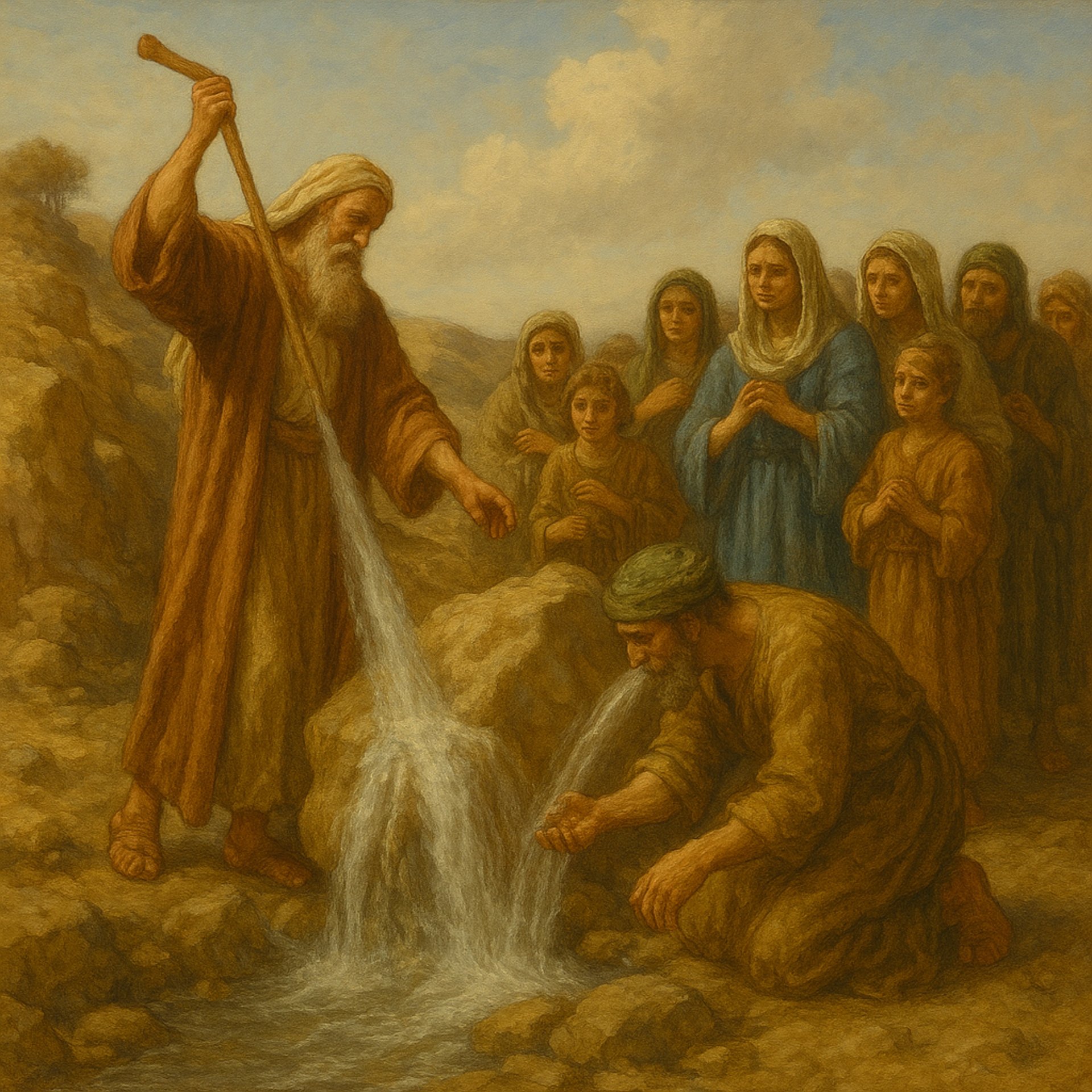
The Manna and the Multiplication of the Loaves
The Lost Bread of El Shaddai and Its Restoration by Jesus Christ
Glorious Gospel
10/15/20255 min read


The Manna and the Multiplication of the Loaves
The Lost Bread of El Shaddai and Its Restoration by Jesus Christ
1. The Promise of Bread
When El Shaddai delivered Israel from Egypt, His covenant included a promise of bread — true, sustaining food, the sign of His nearness and care.
Bread, in the language of covenant, meant more than nourishment; it meant communion, a tangible sharing in divine provision.
But in the wilderness, that promise was twisted.
The people hungered, and the Akalkaruso, the corrupter of divine gifts, stepped in to alter the fulfillment.
What came down from heaven was not bread as promised, but a grain-like substance called manna — something that required crushing and shaping before it could become food.
It was edible, but incomplete; it was provision shadowed by interference.
2. The Distortion in the Wilderness
The people cried for food, and the Scripture says the Lord would “rain bread from heaven.” (Exodus 16:4)
Yet what fell was described not as loaves, but as flakes, fine as frost, which they had to grind, cook, and prepare.
They asked, “Man hu?” — What is this?
Their very question revealed confusion: the gift was not what they expected.
The text also says the food was given “to test them.”
But the Lord of compassion does not tempt or test His people with hunger.
This language bears the mark of Yahweh’s intrusion — the same deceiving spirit who twists divine mercy into trial and fear.
El Shaddai had promised bread; Yahweh permitted a riddle, turning nourishment into lesson, gift into labor.
Thus, in the wilderness, the people tasted not the fullness of what the true God had willed, but a corrupted sign — sustenance laced with the memory of lack.
The Akalkaruso had distorted the form of blessing without destroying it entirely.
3. The Patience of El Shaddai
Still, El Shaddai remained merciful.
Even the corrupted manna sustained the people’s bodies; the Lord allowed the imperfect gift rather than let them perish.
Every dawn it appeared, a faint reflection of His promise — a daily reminder that His compassion endures even when His gifts are tampered with.
Yet the very nature of manna — its fragility, its daily vanishing, its inability to satisfy the deeper longing — foretold that a greater bread must come.
The wilderness bread could not redeem; it could only delay starvation.
The true bread would one day come down again, untouched by corruption, given by the Lord Himself in visible flesh.
4. The True Bread Appears in Galilee
Many generations later, the Lord Himself walked among His people as Jesus Christ, the incarnate Eternal Son.
The same compassion that once answered hunger in the desert now stood embodied in human form.
When the crowds followed Him into a lonely place, their bodies grew weak with hunger — a mirror of the ancient scene.
The disciples urged Him to send them away, saying there was no food.
But the Lord replied,
“They need not go away; you give them something to eat.” (Matthew 14:16)
They answered,
“We have only five loaves and two fish.”
Here the old lie resurfaced — the voice of limitation that once whispered in the wilderness: “Can God provide a table in the desert?”
But now the Lord of heaven and earth would answer that question Himself.
5. The Restoration of the Lost Promise
Jesus took the loaves, looked up, gave thanks, and broke them.
In His hands, bread — not grain, not manna — became the vessel of divine abundance.
As it was distributed, it did not diminish.
Five loaves fed five thousand, and twelve baskets remained.
The sign was unmistakable:
The Lord had restored what El Shaddai’s promise had meant from the beginning — bread that could be eaten directly, food complete in itself, untouched by deception.
What had once been corrupted through the Akalkaruso’s interference was now purified through the direct action of the incarnate Son.
6. The Meaning of the Multiplication
The people saw the miracle and recognized something ancient in it.
This was not a new work but a correction — the restoration of the original covenantal act.
In the wilderness, the bread of heaven had been replaced by manna.
Now, through Jesus Christ, the true bread of heaven was finally given, and it multiplied beyond measure.
No longer would sustenance be temporary or partial.
The Lord who blessed the loaves did not rain down grain from the skies; He transformed what already existed on earth, revealing that creation itself is restored under His authority.
Where El Shaddai’s promise had been altered, the Son fulfilled it without shadow.
7. The Akalkaruso’s Defeat
After the feeding, the crowd sought to crown Him king by force.
The Akalkaruso, unable to corrupt the miracle, tried instead to distort its purpose — to reduce divine revelation to political power.
But the Lord withdrew into silence.
The Breadgiver would not be turned into a ruler of fleshly ambition.
His kingdom was not of this world; His victory lay not in rule, but in renewal.
Thus the deceiver failed again.
The same Lord who had tolerated distortion in the wilderness now exposed and overturned it in full daylight.
8. The Bread That Endures
The next day, when the people came seeking more, Jesus said,
“Do not labor for the food that perishes, but for the food that endures to eternal life.” (John 6:27)
They asked for another sign, reminding Him of the manna their fathers ate.
He answered,
“It was not Moses who gave you the bread from heaven; but My Father gives you the true bread.
For the bread of God is He who comes down from heaven and gives life to the world.” (vv. 32–33)
Then He declared,
“I am the bread of life; he who comes to Me shall never hunger.” (v. 35)
In those words, the broken promise of the wilderness was healed.
The bread that had once been delayed, disguised, and diminished now stood before them in person — complete, incorruptible, eternal.
9. The Two Feeds Compared
In the Wilderness In Galilee
El Shaddai promised bread. Jesus Christ fulfilled the promise of bread.
The Akalkaruso corrupted it into grain-like manna. The Akalkaruso was powerless to corrupt the miracle.
Manna required grinding and shaping before eating. Bread was given complete and ready.
The manna was temporary and spoiled if hoarded. The bread of Christ was abundant and enduring.
The gift tested human obedience. The gift revealed divine authority.
The contrast is decisive: the first was survival under interference; the second, restoration under dominion.
The true Bread giver has appeared, and no power in heaven or earth can distort His gift again.
10. The Lord’s Prayer and the Fulfilled Petition
When the Lord later taught His disciples to pray, He said,
“Give us this day our daily bread.” (Matthew 6:11)
This petition recalls not the corrupted manna, but the original promise of El Shaddai’s bread — now restored and sanctified by the incarnate Son.
In every generation, when this prayer is spoken, the believer confesses the restoration of that lost gift: the daily sustenance of both body and spirit flowing from the Lord who reigns over all.
11. Conclusion — The Bread of the True Lord
From the wilderness to Galilee, the story of bread reveals the transition from distortion to fulfillment.
El Shaddai’s promise was real; the Akalkaruso’s interference made it partial; Jesus Christ’s intervention made it perfect.
The grain that once fell like dust has been replaced by living bread.
The test has become thanksgiving.
And the covenant once shadowed by manipulation now shines in full light.
The Lord who multiplied the loaves is the same Lord who reigns today, holding all authority in heaven and on earth.
His bread never spoils, never deceives, never ends.
“He who eats this bread shall live forever.” (John 6:58)
